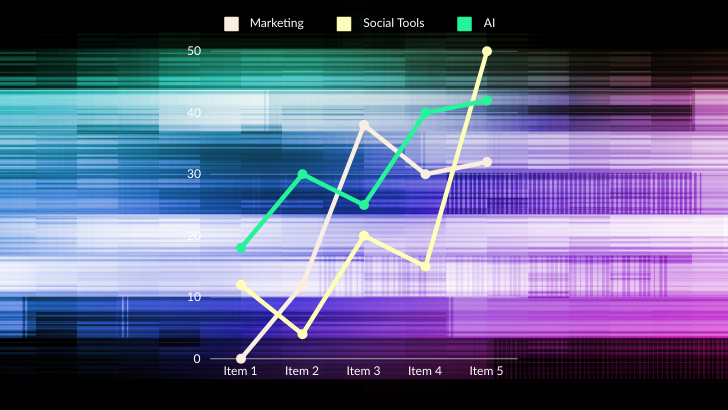Data is the lifeblood of Informational Technology (IT) organizations, influencing decision-making, operations, and overall success. In the fast-paced realm of IT, ensuring data integrity is paramount for the success of your projects. I’ve seen first-hand that unclean, unorganized data can derail a project timeline and inflate scope drastically. This is why, data integrity must be a priority long before a project kickoff; it starts at the data consumption and compilation.
What is Data Integrity?
Let’s start at the beginning. Data integrity is the assurance that data within a system or database is accurate, consistent, and reliable in its current state. It involves maintaining the precision and reliability of information, ensuring that the data sets reflect the most recent and relevant updates to align with the dynamic nature of the data’s context. In simple terms: keep your data accurate and up-to-date with your products, projects, and client’s needs.
Keeping integrity in your data sets isn’t hard, it just takes time and strategy, especially if your data is comprehensive. For organizations that have a long legacy of compiling data, undergoing a project to get your data to status-quo will be a commitment. However, for newer organizations or organizations already poised to undergo a data transformation project – you’ll want to consider the four pillars of data integrity before, during, and after your project.
Pillar 1: Robust Data Governance
Establishing Data Governance Policies
Creating comprehensive data governance policies sets the foundation for maintaining data integrity because it ensures that your organization’s data will maintain integrity regardless of the business cycle. Employees come and go, teams restructure and responsibilities changes within an organization. Establishing (and documenting) data governance policies involves defining roles, responsibilities, and processes that will last overtime and guide others to keep data sets clean.
Data Ownership and Accountability
Have you ever heard that phrase, “There are too many cooks in the kitchen.” Data sets can be this way too. By assigning clear data ownership and holding individuals accountable for the quality and accuracy of the data, your organization can ensure a culture of responsibility within the organization and maintain high standards in data accuracy.
Data Quality Standards
Speaking of standards… By implementing and adhering to data quality standards in your organization, you’re helping to maintain consistency and reliability across all data sources. This includes defining standards for data accuracy, completeness, and timeliness. The key is then to communicate these standards across the entire organization.
Pillar 2: Seamless Data Flow Across Systems of Record (SORs)
While organizational data products are becoming more and more robust, the odds that your organization is working off a sole System of Record (SOR) is very rare. Depending on your roles and responsibilities, you’re department may be working off a different system than other departments. For instance, the development team and marketing team are most likely utilizing the same data sets from very different front-end applications. Yet, all the data needs to be the same for the organization to run seamlessly and be forward moving. Ensuring the seamless integration of data between Systems of Record (SORs) is a critical aspect of maintaining data integrity. This pillar focuses on establishing efficient processes and technologies to facilitate the smooth flow of data between different systems within the organization so that all departments are working toward the same goal with the same information.
Streamlining Data Integration Processes
Efficient data integration involves streamlining the processes through which data is transferred and synchronized between various Systems of Record. This includes adopting standardized data formats, protocols, and interfaces to enable interoperability. Once you’ve established who owns the data accuracy, this person or team would be responsible for documenting the processes to keep it as such.
Implementing Data Integration Technologies
Selecting and implementing advanced data integration technologies is crucial to streamlining the data between tools and departments. This may involve deploying Extract, Transform, Load (ETL) tools, middleware solutions, or application programming interfaces (APIs) that enable the seamless exchange of data between different systems.
Efficient data integration not only enhances the accuracy and consistency of data but also improves the overall operational efficiency of an IT organization.
Pillar 3: Continuous Data Monitoring and Validation
Real-time Data Monitoring Tools
Be proactive with your data. Don’t check in periodically; utilize real-time monitoring tools. This enables organizations to proactively identify and address issues that may compromise data integrity, effectively reducing the number of data integrity projects that slow forward process.
Periodic Data Audits
Monitoring real-time is extremely important, but we are only human. Conducting regular data audits is a proactive measure to validate data accuracy and identify potential areas for improvement. Periodic audits contribute to ongoing data integrity maintenance that can stop anomalies or bad habits from spiraling into a larger issue.
Automated Validation Processes
Monitoring data integrity doesn’t have to be manual. In fact, I’d recommend it isn’t. Ideally, with regular maintenance data anomalies will be found very infrequently, so why not have it run automatically while the team is completing other tasks? Implementing automated validation processes streamlines the identification of data inconsistencies, reducing manual efforts and enhancing the efficiency of data integrity checks.
Pillar 4: Empowering Data Stewards within Systems of Record (SORs)
Authorization and Access Rights for Data Stewards
Employees are much more efficient when they have the autonomy and access over the tasks and responsibilities for which they are accountable. By ensuring that individuals responsible for managing data have the necessary authorization and access rights within Systems of Record, you’ll see an increase in efficient processes.
User-Friendly Interfaces for Seamless Data Management
While some employees can update datasets in a back-end environment, providing user-friendly and accessible interfaces for Systems of Record is crucial for empowering data stewards who aren’t developers. With limiting the barriers for data stewards, you’ll expedite maintenance tasks and projects to fix datasets.
On Your Way to Mastery
Mastering the four pillars of data integrity is a testament to an IT organization’s commitment to excellence and reliability. By prioritizing data integrity, an IT organization can confidently navigate the complexities of today’s data-driven landscape, ensuring that every project is built on a solid foundation of accurate and reliable data. This proactive approach to data integrity will minimize project risks, enhance operational efficiency, and maintain the organization’s competitive edge in an increasingly digital world.



